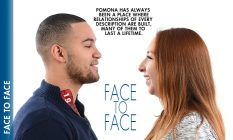
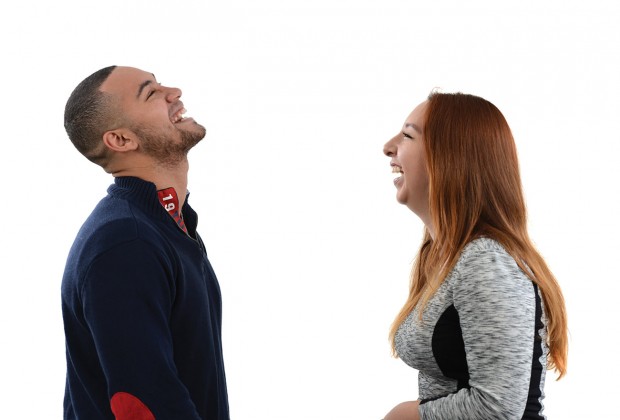 Jaureese Gaines ’16 and Maxine Solange Garcia ’16
Jaureese Gaines ’16 and Maxine Solange Garcia ’16
As members of the 10-student Posse cohort that came to Pomona from Chicago high schools in 2012, Maxine and Jaureese say they feel more like brother and sister than mere friends.
“Simply put, when I use the word ‘Posse’ to describe my relationship with these nine amazing individuals, I’m actually describing my second family,” says Jaureese. “We’re not just a Posse; we are family. I love my four sisters and five brothers.”
As the group nears graduation, Maxine, a neuroscience major, is preparing for medical school, while Jaureese, a politics major with three summer internships in Washington, D.C., under his belt, is planning to return to Chicago to work on educational access. But they expect to stay close in the years ahead.
“We know we’ll all be invited to whatever engagement party, wedding, award ceremony or baby shower either one of us has,” Maxine says. “I also told Reese he’ll have to help me out during med school because of med school debt. Maybe I’ll move into his garage. But in all seriousness, I know that Reese, and all of Posse, will be there for me 20 years down the line, just like they were there for me these past four years.”
 Stephen Glass ’57 and Sandra Dunkin Glass ’57
Stephen Glass ’57 and Sandra Dunkin Glass ’57
Steve and Sandy Glass don’t recall how they met. “Pomona was much smaller when we were there—like 700 or 800 students—and everybody knew everybody,” Sandy says. “So it wasn’t a question of meeting.”
However, they do remember very clearly their first two dates, during their sophomore year. “I asked him out first, to the Associated Women’s Formal,” Sandy says with a laugh.
“That’s right,” Steve agrees. “She asked me out and we had a very nice time. Then I asked her out—took her to the Academy Awards.”
As it happened, Steve’s father, who was in the movie business, didn’t need his Oscar tickets that year. Steve and Sandy double-dated with another Pomona student, Frank Capra Jr. ’55, who was then dating a young starlet named Anna Maria Alberghetti.
“Is that classy or what?” Steve asks.
“I came from Oregon,” Sandy retorts, “so the Academy Awards didn’t mean that much to me.”
The couple graduated from Pomona at about 4 p.m., June 16, 1957, and they were married in Little Bridges, in a traditional Jewish ceremony, three hours later. “After all, the whole family was already there, so why waste it?” Steve says.
The secret of their 58 years together? “I like what she likes, and she likes what I like,” Steve explains. “We had a good education at Pomona, and we always have a lot to talk about.”
 Neuroscience Professor Nicole Weekes and Vivian Carrillo ’16
Neuroscience Professor Nicole Weekes and Vivian Carrillo ’16
“I met Nicole Weekes when I took Neuropsychology my sophomore year,” Vivian remembers. “She has this contagious excitement when she lectures that makes you interested in whatever she is talking about.”
Their relationship progressed from teacher-student to mentor-mentee when Vivian asked Nicole to be her thesis advisor. “I knew her work and was pulled in by her commitment to students,” Vivian explains. “One of the best things about her, and sort of an inside joke between us, is that when I get too ambitious about my work, she says, ‘Save that for your dissertation.’ And while it seems like a joking way to tell me to slow down, it’s reassuring. Hearing her say that reminds me that I can have a future in this field and that I am capable.”
For her part, Nicole says the benefits of mentoring flow both ways. “I love to see my students grow intellectually, personally, socially. It is such an honor for me to get to mentor them in any and all of these arenas. As so many people say about mentoring, I know that I get at least as much back from these relationships as my students do. So, how could I ever say no? It is one of the most important and fulfilling parts of my job. I am honored to watch students like Vivian just continue to rise.”
 Viraj Singh ’19 and Jonathan Wilson ’19
Viraj Singh ’19 and Jonathan Wilson ’19
Pomona puts a lot of work into pairing first-year roommates, but as we all know, it doesn’t always work out. Sometimes, however, the result is golden. Viraj values Jonathan’s fun-loving spontanaeity, and Jonathan appreciates Viraj’s sense of humor. “He’s a go-to funny guy in our hall,” Jonathan says, “and has been known to drop unexpected comments that make everyone in a room keel over in laughter.”
But it’s not just laughter. “In October, my best friend from high school passed away from neuroblastoma,” Jonathan says. “Viraj never pressured me into talking about it or made it about him, but was willing to listen when I wanted to talk. That’s the best I could have asked for in a friend.”
“When you are put in a room with someone else,” Viraj says, “it’s rewarding to be able to talk about anything and truly feel comfortable around him.” Before they go to bed at night, he says, they will often debrief, talking through the significant parts of the day. “It serves as a mini-therapy,” he says.
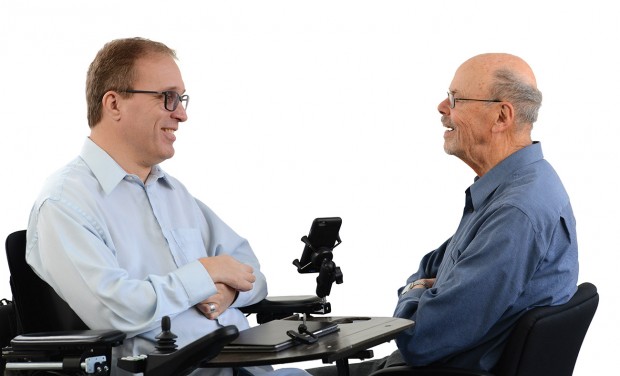 Ed Tessier ’91 and Professor Emeritus of Sociology Bob Herman ’51
Ed Tessier ’91 and Professor Emeritus of Sociology Bob Herman ’51
Bob likes to say he learned more from students like Ed than they learned from him. Ed’s response: “He changed my life.”
An activist since his Pomona days, Ed uses his role as a city planner and developer to make neighborhoods more livable, downtowns livelier, the arts more visible and public places more accessible. “He’s taken the things I was teaching and used them,” Bob says.”He’s a practitioner. He’s doing things. I was just talking in front of a class.”
“We had lunch last week to debate this,” Ed says. “I didn’t know it at the time, but a lot of what Bob was preaching was actually very edgy in the field. When I went out as an activist and was quoting Jane Jacobs and siding with the new urbanists, the development community around here marked me as a real rabble-rousing radical. Now they’ve all changed their tune. This is the new orthodox. So Bob gave me a good 25-year head start on the rest of the field.”
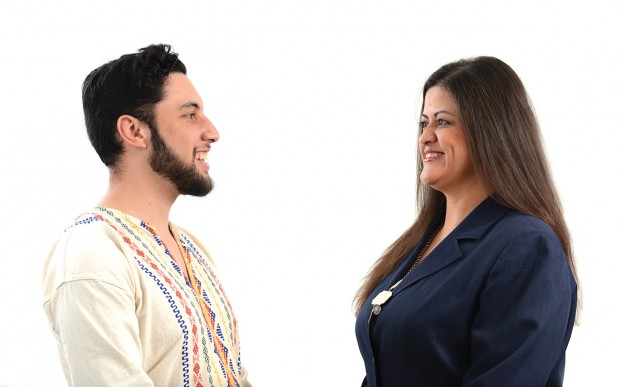 Cesar Meza ’16 and Draper Center Director Maria Tucker
Cesar Meza ’16 and Draper Center Director Maria Tucker
Cesar was 14 years old when he first met Maria as a student in the Pomona College Academy for Youth Success (PAYS). “We were in the Wig lobby when I first introduced myself to her,” he recalls. “Before I could even finish saying my name she told me what city I was from and what high school I went to.”
Years later, when he was accepted as a Pomona College first-year, he already knew he wanted to work at the Draper Center. Since then, the Center—and Maria—have continued to play a huge role in his education. “I would not be the active student I am today without her guidance and support,” he says. “She has helped me navigate through difficult situations and given me the motivation to overcome any obstacles.”
For her part, Maria says the chance to mentor smart, caring students like Cesar is one of the biggest perks of the job. “For me, these relationships keep alive the notion that education transforms lives as well as communities,” she says.
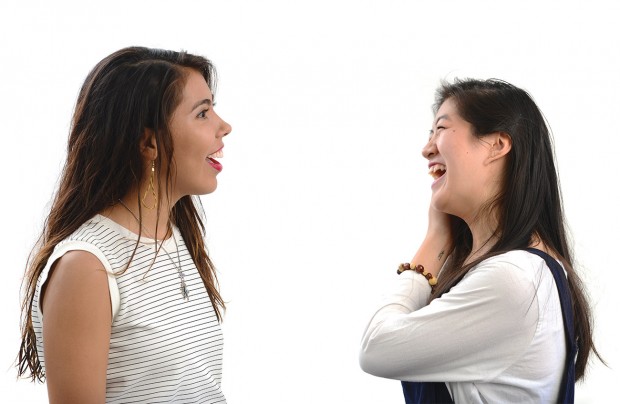 Jamila Espinosa ’16 and Lucia Ruan ’16
Jamila Espinosa ’16 and Lucia Ruan ’16
Jamila and Lucia met at Women’s Union during their first year, but their friendship didn’t really blossom until the following summer, when they began to exchange thoughts and experiences over Facebook, a habit they continue to this day.
“Lucia is one of the most thoughtful people I know.” Jamila says. “Whether it be finals week, or Christmas, or Valentine’s Day, or your birthday, you can count on some type of recognition from her. She is the master of planning surprise parties. She also knows where to find the funniest memes on the Internet, and I especially admire her fashion sense. In short, she is fabulous on the inside and out.”
Lucia describes Jamila as “a huge support in my life and someone I share almost everything with. Even this past weekend, I was feeling incredibly down, and she came into my room and kept me company, waiting for the moment I was ready to share what was bothering me and offering suggestions that push me in the right direction towards taking care of myself.”
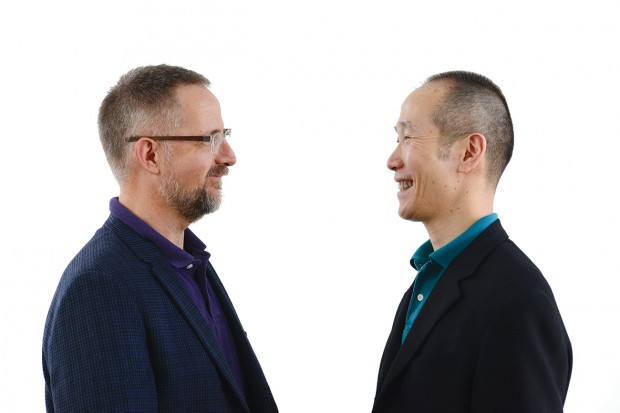 Richard Bookwalter ’82 and Galen Leung ’82
Richard Bookwalter ’82 and Galen Leung ’82
Richard and Galen recall meeting as first-year students who had been elected as members of the Freshman Dorm Council, representing Walker (Galen) and Oldenborg (Richard). Early in the second semester, the group threw a Survivors’ Party for students who had made it through the first half of the year, and afterwards, Richard says, “we were the only two who showed up on the cleaning committee.”
Over the next couple of years, they mostly went their separate ways—different dorms, different majors, different groups of friends. But after Galen returned from a junior year semester in Washington, D.C., and Richard returned from a semester abroad in Geneva, Switzerland, the two met again at a Gay Student Union meeting, and by the end of their senior year, the two knew they wanted to be together.
Three decades later, they’re still together, and on August 30, 2008, they were married.
“I think our relationship has lasted over 34 years because we are able to communicate with each other,” Galen says. “I love Richard because he’s the best—intelligent, feeling and concerned about the world, himself and others. His perspective and empathy help me relax and enjoy the moment and the world around me.”
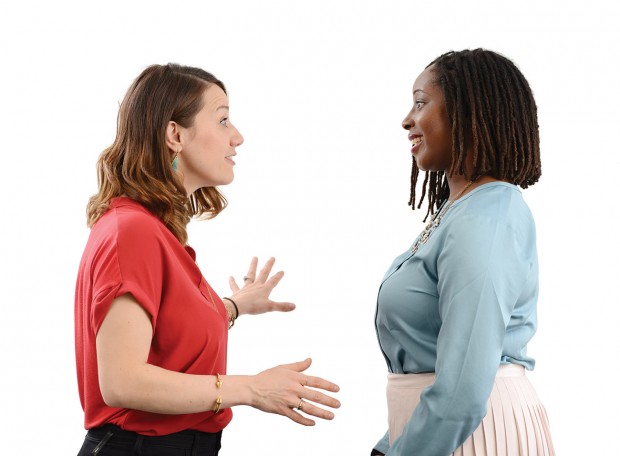 Shadiah Sigala ’06 and Kaneisha Grayson ’06
Shadiah Sigala ’06 and Kaneisha Grayson ’06
Shadiah and Kaneisha now live almost 2,000 miles apart, but at heart, they’re always closer. “Kaneisha is one of my life partners,” Shadiah says. “There are a handful of those people in my life—including my husband, mom and daughter—and Kaneisha makes it on the short list.”
The two met during a first-year seminar class, but it wasn’t until the following semester that they became close. During a trip to Washington, D.C., Kaneisha came up to Shadiah and said, with her usual directness, “You’re going to be my friend.”
“I thought, ‘Who is this bold, confident woman?’” Shadiah remembers. They soon discovered that they were much alike, though Shadiah thought of Kaneisha as “a more advanced version of me.” She adds: “Truthfully, she showed me all that I was capable of doing, simply by being herself.”
Now, Kaneisha says, the shoe is on the other foot as she learns from her friend’s experiences in life and work. “I love how Shadiah can tackle very difficult things,” she says, “planning a wedding, being married, working a demanding job, being a mom, even looking for a startup job during a brutal recession, while staying very positive and still engaging in self-care. Having a close friend go through many life events just a bit before you do—and report back the truth of how it’s simultaneously not as bad and way harder than others make it seem—is very encouraging and uplifting.”
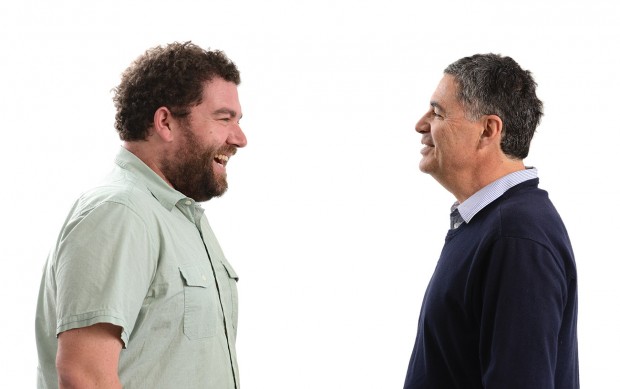 Dan Stoebel ’00 and Biology Professor Daniel Martínez
Dan Stoebel ’00 and Biology Professor Daniel Martínez
Daniel Martínez joined the Pomona faculty in 1997, and Dan was one of his first student researchers. “His project was very hard,” Daniel recalls. “I can’t believe we did manual gene sequencing using radiation, but at the time, it was the only way.”
“What made Daniel unique was that he treated us like colleagues,” says Dan, who went on to follow in Daniel’s footsteps, earning his Ph.D. at the same institution, SUNY Stony Brook, and becoming a professor of biology at neighboring Harvey Mudd College.
“Daniel told us quite honestly that much of the material was not his field of expertise, and this turned out to be valuable. Daniel was not an authority, but rather modeled how those who know how to learn go about doing it. As he struggled with us to understand a poorly explained experiment, or a seemingly contradictory result, we got to watch a professional scientist in the process of intellectual exploration. In putting himself on the line for us, in making himself vulnerable to failure with us, Daniel was a role model for the type of learning that we all have to do after we graduate. I am profoundly grateful for his willingness to do so.”
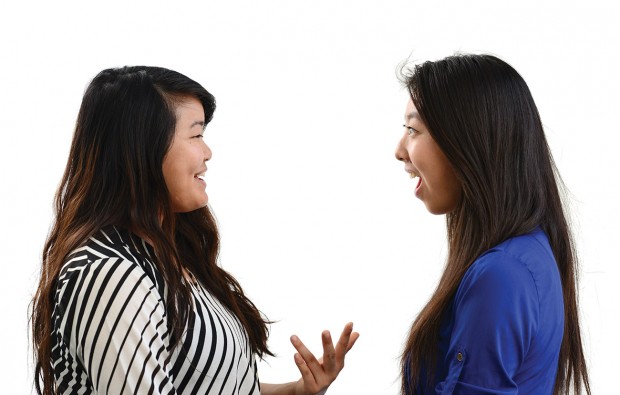 Michelle Chan ’17 and Sophia Sun ’18
Michelle Chan ’17 and Sophia Sun ’18
When Sophia was trying to decide between Pomona and two big universities, she introduced herself in a post on the Facebook page for each institution. The warm and welcoming response from Pomona students, including Michelle, convinced her that Pomona was where she belonged. “Even through Facebook,” she says, “I could tell that Michelle was incredibly warm, passionate, and curious—an initial impression that has been wholly confirmed by all my interactions with her.”
“We’re both perpetually awestruck with gratitude in our landing at Pomona,” Michelle says. “and we feed off each other’s energy in our passion for more. Sophia has taught me how to embrace life head-on and not waste a single opportunity to learn and reflect.”
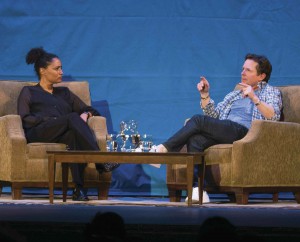
 Spring is here, and the Organic Farm is bustling, as Pomona students welcome the season by following Voltaire’s advice to “tend your garden.” According to Farm Manager Scott Fleeman, March harvests have already included kale, collards, broccoli, Swiss chard, radishes, snap peas, fava beans, bunching onions and tangerines, as well as the first artichokes. Here’s a partial harvest schedule for the rest of the spring:
Spring is here, and the Organic Farm is bustling, as Pomona students welcome the season by following Voltaire’s advice to “tend your garden.” According to Farm Manager Scott Fleeman, March harvests have already included kale, collards, broccoli, Swiss chard, radishes, snap peas, fava beans, bunching onions and tangerines, as well as the first artichokes. Here’s a partial harvest schedule for the rest of the spring: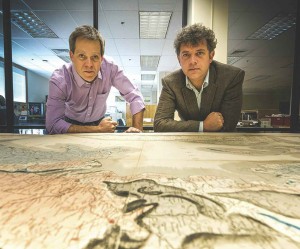
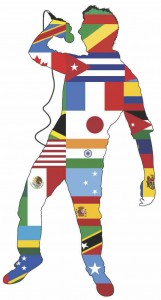 Song requests for a recent Karaoke Klub Nite included: Vicente Fernandez’s “El Rey” in Spanish, Aamir Khan’s “Mitwa” in Hindi, Les Cowboys Fringants’ “En Berne” in Canadian French, and a few Demi Lovato and Celine Dion songs thrown in for good measure.
Song requests for a recent Karaoke Klub Nite included: Vicente Fernandez’s “El Rey” in Spanish, Aamir Khan’s “Mitwa” in Hindi, Les Cowboys Fringants’ “En Berne” in Canadian French, and a few Demi Lovato and Celine Dion songs thrown in for good measure.
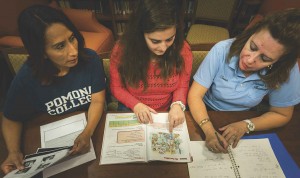

 Jaureese Gaines ’16 and Maxine Solange Garcia ’16
Jaureese Gaines ’16 and Maxine Solange Garcia ’16 Stephen Glass ’57 and Sandra Dunkin Glass ’57
Stephen Glass ’57 and Sandra Dunkin Glass ’57  Neuroscience Professor Nicole Weekes and Vivian Carrillo ’16
Neuroscience Professor Nicole Weekes and Vivian Carrillo ’16 Viraj Singh ’19 and Jonathan Wilson ’19
Viraj Singh ’19 and Jonathan Wilson ’19 Ed Tessier ’91 and Professor Emeritus of Sociology Bob Herman ’51
Ed Tessier ’91 and Professor Emeritus of Sociology Bob Herman ’51 Cesar Meza ’16 and Draper Center Director Maria Tucker
Cesar Meza ’16 and Draper Center Director Maria Tucker Jamila Espinosa ’16 and Lucia Ruan ’16
Jamila Espinosa ’16 and Lucia Ruan ’16 Richard Bookwalter ’82 and Galen Leung ’82
Richard Bookwalter ’82 and Galen Leung ’82 Shadiah Sigala ’06 and Kaneisha Grayson ’06
Shadiah Sigala ’06 and Kaneisha Grayson ’06 Dan Stoebel ’00 and Biology Professor Daniel Martínez
Dan Stoebel ’00 and Biology Professor Daniel Martínez Michelle Chan ’17 and Sophia Sun ’18
Michelle Chan ’17 and Sophia Sun ’18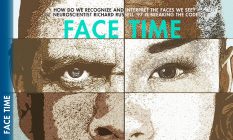
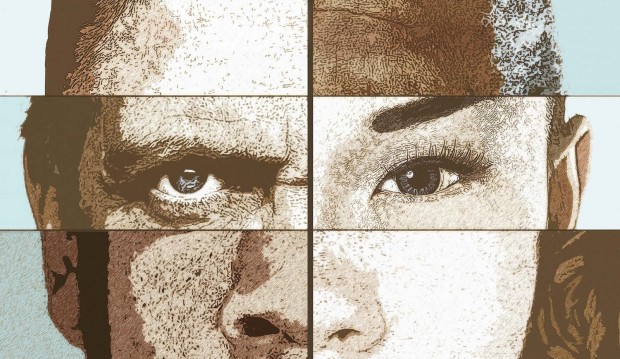 Spirits of Saturn was a fine, white powder that 17th-century women smoothed into their skin. Also known as Venetian ceruse, it hid smallpox scars, spots and blemishes, transforming faces into a fashionable pallor. It also slowly poisoned the wearer—it was made of powdered lead.
Spirits of Saturn was a fine, white powder that 17th-century women smoothed into their skin. Also known as Venetian ceruse, it hid smallpox scars, spots and blemishes, transforming faces into a fashionable pallor. It also slowly poisoned the wearer—it was made of powdered lead.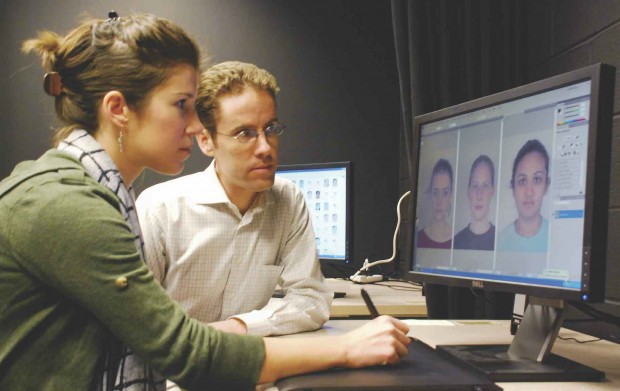
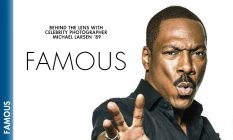
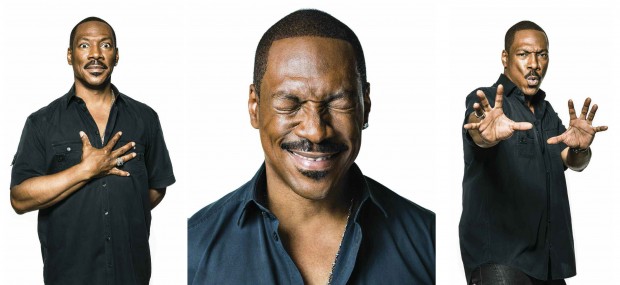
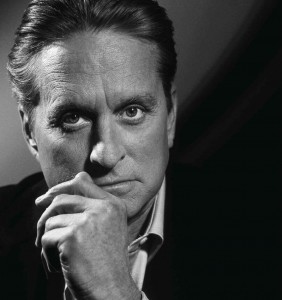
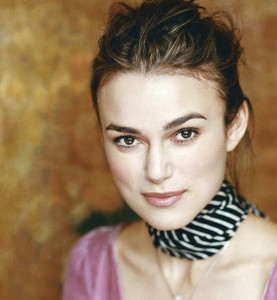
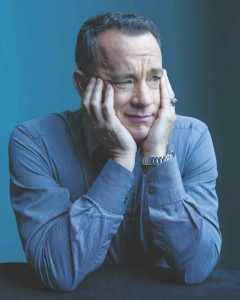
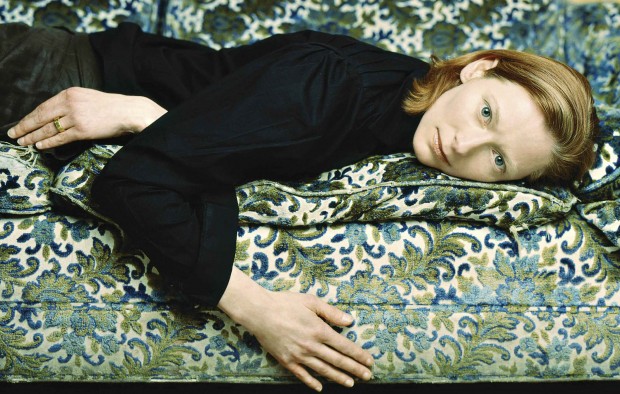
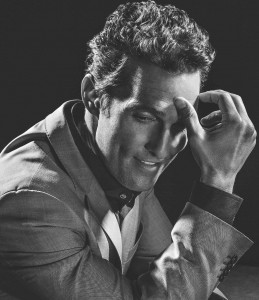


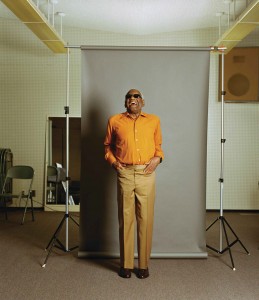
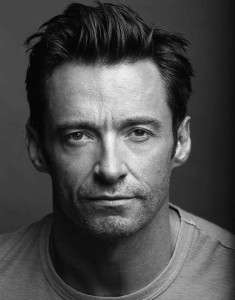

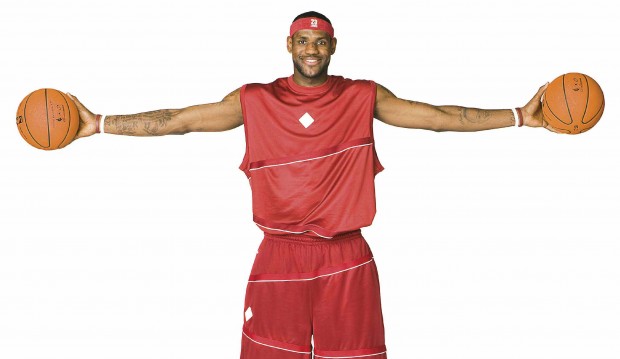
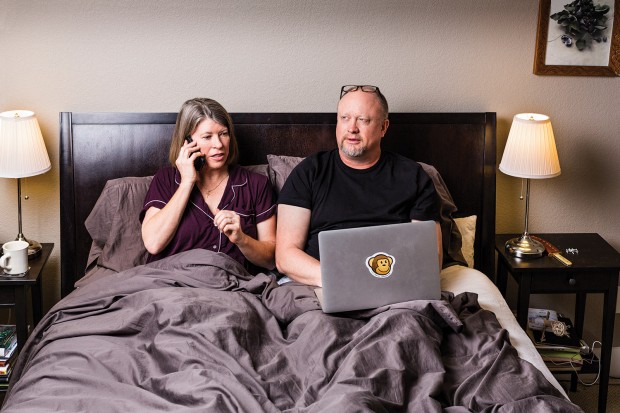
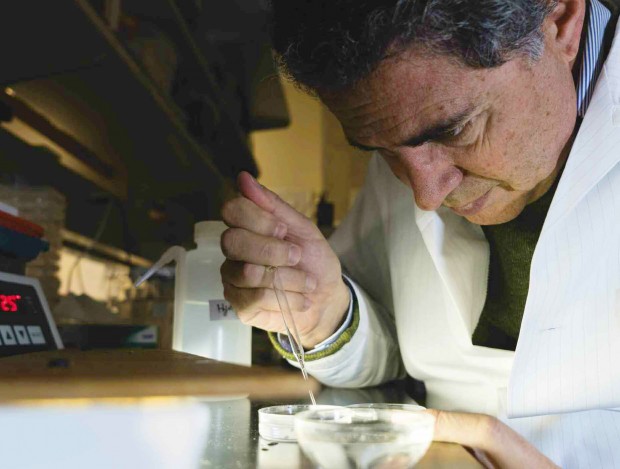 Teeny Tiny Immortals
Teeny Tiny Immortals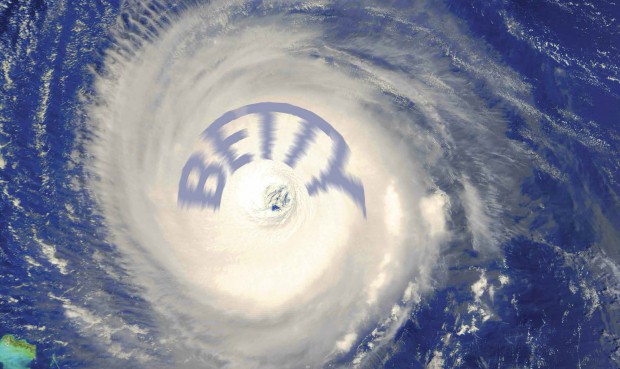 What’s in a Name?
What’s in a Name?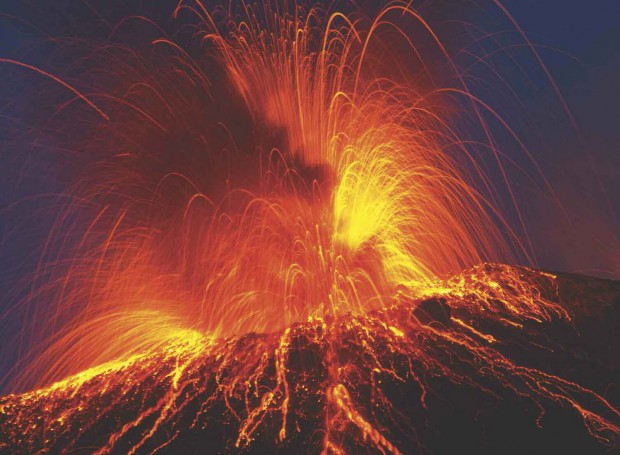 Supervolcanoes
Supervolcanoes